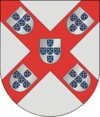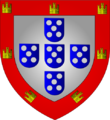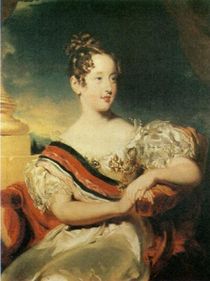House of Braganza
|
||||||||||||||||||||
The Most Serene House of Braganza (Sereníssima Casa de Bragança; Portuguese pronunciation: [bɾɐˈɣɐ̃sɐ]) is an important Portuguese noble family and was the dynasty which ruled the Kingdom of Portugal and its colonial ultramarine Empire, from 1640 to 1910, and a branch of it was the dynasty that founded and governed the Empire of Brazil from 1822 to 1889, as the Brazilian Imperial Family.
It is a collateral line of the House of Aviz, which ruled Portugal from 1385 until 1580. Therefore, it is also a branch of the French House of Burgundy, of the French House of Capet.
In 1853, due to the marriage of Queen Maria II of Braganza to Ferdinand of Saxe-Coburg and Gotha, the dynastic heirs of House of Braganza became the House of Braganza-Saxe-Coburg and Gotha, a branch of the German House of Wettin. The use of the designation Braganza-Saxe-Coburg and Gotha, or just Braganza-Coburg, however, is prevalent mainly in the writings of non-Portuguese historians and genealogists, or in writings that are not contemporary to the rule of the Braganza-Saxe-Coburg and Gotha monarchs in Portugal, since they still continued to style themselves as members of the House of Braganza, as opposed to Braganza-Saxe-Coburg and Gotha.
Contents |
History
Dukes
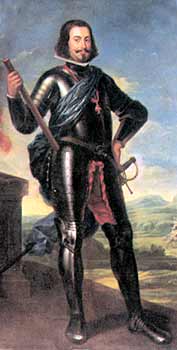
Afonso, count of Barcelos, was an illegitimate son of King João I of Portugal by Inês Pires.[1] In 1442, Afonso's nephew, King Afonso V created the Duchy of Braganza, a royal dukedom, for his uncle. The Duchy included the important town of Braganza in northeastern Portugal, which gave the house its name. It is the third-oldest dukedom in Portugal, after Viseu and Coimbra.
Count Afonso was an expert intriguer, who was favored by his father King João I, his brother King Duarte I, and his nephew King Afonso V. In 1442, King Afonso gave him the dukedom, and in 1445, when the King came of age, Duke Afonso was the wealthiest and most powerful man in the kingdom.
The third Duke, Fernando II, married Isabella, granddaughter of Duarte I, thus bringing the House of Braganza into the legitimate succession to the throne. However, his power and intrigues led to the suppression of the Braganzas by King João II. In 1483, João had Fernando executed in Évora for treason. Later João seized the Braganza lands and exiled the four-year-old heir, Jaime, to Castile.
João II's successor, King Manuel I was Jaime's uncle. In 1500, he recalled his nephew to Portugal, returning to him the titles and (part of) the lands of Braganza. The house was once again one of the highest and mightiest in the country. Jaime ordered the construction of a monumental palace at Vila Viçosa, which would become one of the royal palaces in the 17th century.
The sixth Duke, John I of Braganza, married Infanta Catarina of Portugal, daughter of Infant Duarte, sixth son of king Manuel I, again linking with the royal line. Their son was the courageous seventh Duke Teodósio II, who allegedly fought in the Battle of Alcacer Quibir (1578) when only ten years old.
Meanwhile, the Portuguese kingdom had a succession crisis. King Sebastian I was lost in battle in Morocco in 1578. He was a childless bachelor and the crown passed to his elderly great-uncle, Cardinal Henry I, who of course was also childless. On Henry I's death in 1580, there were several claimants to the throne, all in some way weak. The Duchess of Braganza had a claim, through her father, but was denied, mostly due to her gender. Her husband had a claim descending from the third Duke. Other claimants included Ranuccio I Farnese, Duke of Parma and King Philip II of Spain. Philip was the most powerful contender, and became King Philip I of Portugal, establishing a union of crowns. Portugal was thereafter ruled by Habsburg governors appointed by Philip and his successors.
The Duke Teodosius II did not press his claim; he supported Philip II, from whom the Braganzas gained more land and titles.
Kings
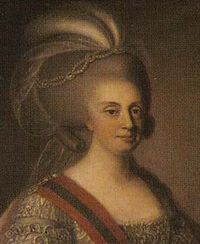
By 1640, the wise policies of Philip II in respect of Portugal were long past. The country was overtaxed, Portuguese colonies were left unprotected, and the Habsburg king, Philip IV of Spain (III of Portugal), no longer had the trust or support of most Portuguese nobles. He was especially loathed by the powerful Portuguese guild of merchants. Portugal, like the rest of Philip's kingdoms, was on the verge of rebellion. The eighth Duke of Bragança, João IV, had inherited the claim of his grandmother, Infanta Catarina, and the remoter claim through of his grandfather João I. The rebels asked him to lead their uprising.
According to court historians, João IV was a modest man without particular ambitions to the crown. Legend says that his wife, Luisa de Guzmán, daughter of the duke of Medina-Sidonia, urged him to accept the offer saying, "I'd rather be Queen for one day than duchess for a lifetime." He accepted the leadership of the rebellion, which was successful, and was acclaimed João IV of Portugal on December 1, 1640.
After the accession of the Braganzas to the throne, the duchy was linked to the Crown. "Duke of Braganza" became the traditional title of the heir to the throne, together with or alternate to Prince of Beira, much as Prince of Wales is in the United Kingdom or Prince of Asturias in Spain.
Under João's sons Afonso VI and Pedro II, the Portuguese colonial empire, part of which was lost during the Spanish occupation, was restored and expanded, bringing new wealth to Portugal.
The zenith of the Braganza dynasty was reached under the long reign of João V (1706–1750), who ruled with grandeur and piety. The reign of José I, son of João V, was marked by the great earthquake, which struck Lisbon in 1755. The political genius of his reign was the Marquis of Pombal. The end of the 18th century was characterized by stability, under the rule of Maria I (1777–1816), who discharged Pombal at her accession. Unfortunately Maria became psychologically unstable, displaying similar symptoms to George III of the United Kingdom in his later years.
In 1807 the Braganzas fled to Brazil, Portugal's largest colony, as the mother country was involved in the Napoleonic Wars. Some time after their arrival, the status of this country was changed by a royal decree, from a Portuguese colony into the capital of the United Kingdom of Portugal, Brazil, and the Algarve.
In 1821, João VI, who succeeded in 1816, returned to Portugal. He demoted Brazil to a colony again, sparking rebellion there. His eldest son Pedro I, who was regent in Brazil, sided with the rebels. He proclaimed himself Emperor of Brazil as an independent country.
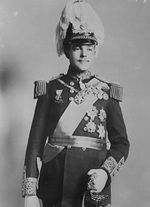
Pedro ruled Brazil until 1831, when he abdicated in favor of his young son Pedro II, and went off to Portugal to aid his daughter (see below). Pedro II ruled until 1889, when the Brazilian monarchy was toppled by angry landed aristocrats disagreeing with the abolition of slavery.
In Portugal, Pedro I of Brazil became King as Pedro IV (1826), but no one wanted to re-establish the union of Portugal and Brazil. Pedro abdicated the Portuguese throne in favor of his daughter Maria da Gloria, then seven years old. Pedro's brother Miguel was to act as Regent, and marry Maria when she came of age. Miguel instead proclaimed himself king and repudiated the liberal constitution granted by João VI.
Maria was forced into exile. Her father Pedro returned from Brazil, and from the Azores waged a successful campaign against Miguel, who was defeated and exiled in 1834. She married Prince Ferdinand of Saxe-Coburg and Gotha. Maria II was succeeded in 1853 by her son Pedro V, a hard-working reformer who died prematurely young in 1861 due to cholera. Pedro V was succeeded by his brother Luis, a dedicated scientist.
Luis was succeeded in 1889 by his son Carlos I. Carlos was assassinated in 1908 together with his eldest son, Luis Filipe by republicans. His younger son, Manuel II, survived the attack on his father and elder brother, but was toppled in the 1910 republican revolution. Manuel was forced to go into exile by the Portuguese First Republic.
Pretenders
After the revolution of 1910, King Manuel II settled in England until his death in 1932. He was childless, and there were descendants of Miguel, the usurper of 1826, who claimed the throne. In 1920–22, the two branches of the House of Braganza negotiated a pact under which Manuel named as heir Duarte Nuno, Duke of Braganza, grandson of Miguel. Duarte Nuno remained the Braganza pretender until his death in 1976. In 1942, he married a great-granddaughter of Pedro II of Brazil, uniting the two lines of the House.
In 1950, Portugal repealed the law of exile against the Braganzas, and Duarte Nuno moved to the country in 1952.
Duarte Nuno was succeeded as pretender by his son, Duarte Pio (born 1945). Duarte Pio served in the Portuguese Army, and took the customary oath of allegiance to the Republic, but is still recognized as the pretender to the Portuguese throne by Portuguese monarchists. In 1995, he married Isabel de Herédia, a Portuguese businesswoman. He has been active in support of the independence of East Timor from Indonesia.
Maria Pia de Saxe-Coburgo e Bragança, who claimed she was an illegitimate daughter of Carlos I, started claiming she was the heir to the throne from 1957.
Footnotes
- ↑ There is some controversy regarding the ancestry of Inês Pires (born in Borba, circa 1350). She was the daughter of Pedro Esteves (for that she is sometimes called Inês Pires Esteves) and Maria Anes ("Grande Enciclopédia Portuguesa e Brasileira", Editorial Enciclopédia, Lisboa, vol. 4, pp. 172; António Caetano de Sousa, "História Genealógica da Casa Real Portuguesa", Atlântida Ed., Coimbra, 1946, vol. 2, pp. 25). Some historians and genealogist claim that her father was a converso - a Jew converted to Catholicism (Augusto Soares d' Azevedo Barbosa de Pinho Leal, "Portugal Antigo e Moderno", Cota d' Armas, Lisboa, 1990; Isabel Violante Pereira, "De Mendo da Guarda a D. Manuel I", Livros Horizonte, Lisboa, 2001), while the majority of sources give her a long and well attested noble Christian ancestry (Felgueiras Gayo, "Nobiliário das Famílias de Portugal", Carvalhos de Basto, Braga, 1989).
List of Braganza sovereigns
Dukes of Braganza
- Afonso, 8th Count of Barcelos, became 1st Duke of Braganza (1442).
- Ferdinand I, 2nd Duke of Braganza.
- Ferdinand II, 3rd Duke of Braganza and 1st Duke of Guimarães (1475).
- James (Jaime), 4th Duke of Braganza and 2nd Duke of Guimarães.
- Teodosius I, 5th Duke of Braganza and 3rd Duke of Guimarães. He ceded the dukedom of Guimarães to his brother-in-law, infant Duarte.
- John I, 6th Duke of Braganza and 1st Duke of Barcelos (1562).
- Teodosius II, 7th Duke of Braganza and 2nd Duke of Barcelos
- John II, 8th Duke of Braganza and 3rd Duke of Barcelos. He recovered the Dukedom of Guimarães (6th Duke), once his grand-uncle, Infante (Prince) Duarte II, 5th Duke of Guimarães, died childless (1576). In 1640, he became King of Portugal as John IV.
Rulers of Portugal
Braganza Line
- João IV (1640–1656)
- Afonso VI (1656–1683)
- Pedro II (1683–1706)
- João V (1706–1750)
- José I (1750–1777)
- Pedro III (1777–1786)
- Maria I (1777–1816)
- João VI (1816–1826)
- Pedro IV (1826)
- Miguel I (1828–1834)
- Maria II (1826–1853)
Braganza-Saxe-Coburg and Gotha Line
- Pedro V (1853–1861)
- Luis I (1861–1889)
- Carlos I (1889–1908)
- Manuel II (1908–1910)
Emperors of Brazil
House of Braganza as a Royal House
|
House of Braganza
Cadet branch of the House of Aviz
|
||
| Preceded by House of Habsburg |
Ruling House of the Kingdom of Portugal 1640–1853 |
Succeeded by House of Braganza-Saxe-Coburg and Gotha |
| Preceded by New Creation |
Ruling House of the Empire of Brazil 1822–1889 |
Republic Established by Military Coup See History of Brazil (1889–1930) |
|
||||||||||||||||||||
See also
- List of Portuguese monarchs
- Kings of Portugal family tree
- House of Burgundy
- House of Aviz
- Philippine House
- House of Braganza-Saxe-Coburg and Gotha
- Timeline of Portuguese history
- Line of succession to the Portuguese throne
- Line of succession to the Brazilian throne
External links
- Official Website of the Royal House of Braganza
- Dukes of Braganza genealogy in a Portuguese genealogical site
- An Online Gotha - Royal House of Portugal
|
||||||||||||||||||||||||||||||||||||||||||||||||||||||||||||||||||||||||||||||||||||||||||||||||
|
|||||||||||||||||||||||||||||||||||||||||||||||||||||||||||||||||||||||||||||||||||||||||||||||||||||||||||||||||||||||
